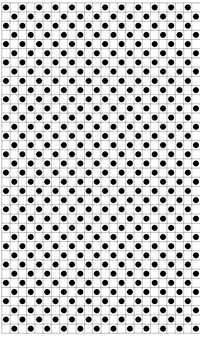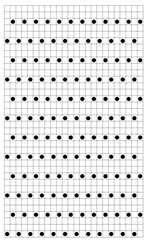Classroom: Machine Knitting Patterns | 6 methods
Claim Your Free Patterns
What patterns do you use for your machine?
1. Knit it Now Dynamic Patterns
2. Use hand knitting patterns
3. Chart your own patterns
4. Use software
5. Charting Devices
6. Vintage Machine Knitting Patterns
A mystery pattern. Can you decipher this?
Crack the code
Discovered in a vintage machine knitting book, this technique is a good example of how things have changed for machine knitters.
Once-upon-a-time it was common to use a variety of abbreviations for knitting instructions. Unfortunately, there was very little standardization and the terms could be quite cryptic.
Here are the original instructions, along with the translations.
Can you crack the code? Challenge yourself to "read" the original and try to decipher what the author had in mind.
When you get stuck with abbreviations when reading vintage books, use the Knit it Now Glossary for help
Once-upon-a-time it was common to use a variety of abbreviations for knitting instructions. Unfortunately, there was very little standardization and the terms could be quite cryptic.
Here are the original instructions, along with the translations.
Can you crack the code? Challenge yourself to "read" the original and try to decipher what the author had in mind.
When you get stuck with abbreviations when reading vintage books, use the Knit it Now Glossary for help

Hints
- Cast-on for a basic hem with W.Y. Knit several rows. C.O.L. Thread up carriage with cast-on cord. Knit one row. C.O.R.
- Thread up carriage with contrast yarn.
- Knit 11 rows M.T.-2. Con. Y. C.O.L.
- Take out Con.Y. and thread up M.Y. Knit 1 row M.T.-1. C.O.R. Place a basic simple lace card in the pattern card feeder.
- With M.Y. knit 12 rows M.T. -1 in the lace pattern.
- Turn up the hem



